Flag of the Russian Empire on the African coast
Cossacks in Africa
Nikolai Ivanovich was distinguished not only by his penchant for adventure. He was a great storyteller and, not least, an inventor. Being in Abyssinia, Ashinov sent letters to friends and acquaintances in which he described his stay on the Black Continent in colors. For example, he told how once he had to fight with local hostile savages. Suddenly, during the battle, his wife began to give birth. Nikolay Ivanovich, without ceasing to repel the attacks, took delivery and literally gnawed on the umbilical cord with his teeth. The enemies, stunned by such an act, of course, retreated.
He sent letters to Russian newspapers. Thanks to this, the Russian Empire learned that the Ashins from their voyage are being carried by several delegates from Abyssinia who want to meet with the emperor. This statement, by the way, turned out to be real. In 1888, Nikolai Ivanovich came to Kiev, where there were celebrations in honor of the 900 anniversary of the Baptism of Russia. And the company was made up of representatives of the Abyssinian clergy. True, in fact, they did not have any relation to “the very” Abyssinia. These monks were novices of the Abyssinian monastery in Jerusalem. But this fact Ashinov chose not to make public.
Thanks to his connections, Ashinov managed to get a meeting with the Chief Prosecutor of the Holy Synod, Konstantin Petrovich Pobedonostsev. Since foreign clergy did not, of course, speak Russian, Nikolai Ivanovich himself was the main translator. He told Pobedonostsev that both the Negus and the Abyssinian Church literally dream of a rapprochement with both the Russian Empire and the Russian Orthodox Church. Then Ashinov said that foreign guests want to get an appointment with the emperor. And ... Alexander III accepted them (not without cost, of course, without the participation of Pobedonostsev). But everything turned out not quite as the Cossack intended. He himself was not invited to meet with the sovereign. And although Nikolai Ivanovich took this news with resentment, the mechanism he needed was launched. Pobedonostsev himself caught fire with the idea of bringing together so many countries and churches that are far from each other geographically. Therefore, he began preparatory work on sending a spiritual mission to the Black Continent and even chose its leader. In a letter to the emperor, Konstantin Petrovich said: “At present, we are expecting from Athos one efficient monk Paisius ...”. He didn’t disregard the Cossack: “As for Ashinov, he, of course, is an adventurer, but now he serves as the only Russian man to break into Abyssinia ... and, in all likelihood, in such cases, the most feasible are Ashinov’s ".
The emperor received foreign monks. And I was pleased with that meeting. Although no serious and important issues or topics in the conversation were not raised. But on the advice of Pobedonostsev (he, by the way, is considered one of the “gray cardinals” under Alexander III), personally endorsed Ashinov’s second journey to Africa. The purpose of the Cossack was achieved - his adventure acquired state status.
Spiritual ally
When Pobedonostsev wrote about the “efficient monk Paisia”, he pushed off the recommendation of omnipresent Nikolai Ivanovich. Paisiy and Ashinov were well acquainted. And the Cossack, promoting his candidacy, pursued only one goal - he needed a proven man on an expedition.
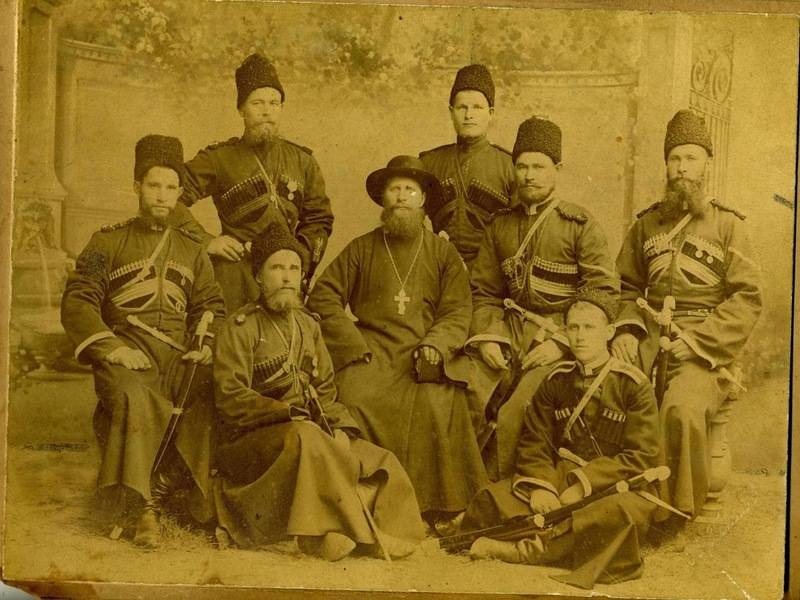
Schisamone Paisius was at that time the manager of the monastery of the Athos St. Panteleimon monastery in Constantinople (Istanbul). He was not an example to follow, so he practically did not move up the career ladder. All because of - unworthy behavior. In his youth, he not only did not avoid worldly pleasures, on the contrary, the monk diligently sought to meet them. But then suddenly he repented and became the eunuchs. In this incarnation he also did not work out. Skoptsov was declared sectarian, arrested and sent to Siberia. But Paisiy managed to get some fake documents somewhere and ran away. For a while he worked as a laborer for the Chekhov family in Taganrog, calling himself a wanderer Vasily. But such a life was too boring for an adventurous clergyman. And he moved to the St. Panteleimon Monastery on Mount Athos. Here he managed, as they say, to turn around. He took part in the displacement of the Greek archimandrite, supporting the Russian Macarius. Actually, for this coup and made him the manager of the yard. It was then that he became acquainted with the Cossack Ashinov.
Unexpected scandal
When Paisius was in St. Petersburg, one problem arose. Schimonchah could not become the leader of a spiritual mission in such an important and responsible matter. So, the Synod had to sharply raise it. And after only a week, the modest Schema-monk climbed the career ladder to the Archimandrite.
After that, Nikolai Ivanovich, together with Paisiy, began to raise funds for the upcoming expedition. Although she was official and approved by the sovereign, they did not receive any money from the government. Instead, the Navy Ministry gave Ashinov a much more valuable commodity - he received several hundred firearms and cold weapons, a substantial supply of gunpowder and even a few machine guns. Nikolai Ivanovich was only pleased with such a plot development.
Meanwhile, Paisius placed advertisements in newspapers, in which he called on all Christians to donate funds for a charitable expedition, as well as for the erection of an Orthodox church in Africa.
The naval department, in addition to weapons, began to prepare the vessel for long-distance travel. In addition, a gunboat was assigned to protect him. Ashinov did not sit with folded arms. He constantly reminded of the "free Cossacks" who are waiting for him in Turkey and are ready to go with their chieftain to Abyssinia. No one, of course, waited for him in Turkey. Nikolai Ivanovich went to this deception for the sake of one goal - to obtain a large number of weapons. The Cossack had big plans for him, since it was precisely guns and sabers that were the main currency in Africa.
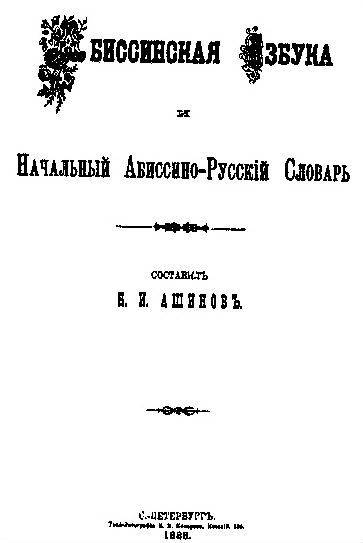
When about one and a half hundred Cossacks and clergymen were recruited, a scandal broke out. Somehow, the Synod got to the bottom of the past "hobbies" of Paisius. At the same time, the Ministries of Foreign and Internal Affairs received the news that there was no New Moscow in Abyssinia, as there were no “free Cossacks” in Turkey. Ashinov simply threw several of his soldiers in Africa. Some managed to get to the French fortress of Obock, others - to the embassy of the Russian Empire in Istanbul. So the deception was revealed. The scandal was a big deal. State support was immediately curtailed, and the collection of donations was prohibited. The naval ministry vetoed the issuance of weapons ... In general, Ashinova’s whole undertaking was on the brink of an abyss. But ... the emperor did not officially ban Nikolai Ivanovich expedition.
Curious is the statement of the Nizhny Novgorod Governor Nikolai Mikhailovich Baranov, who very much wanted to become the head of “Russian Africa”: “Perhaps the beginning of my actions in Abyssinia would be the setting of the gallows for Ashinov. Many people know that the Ashinov is a knave, but because of this it is strange not to use the Red Sea coast and not to enter into relations with Abyssinia. ”
Russian flag over Sagallo
It is not known what Nikolai Ivanovich and Paisiy thought and said at that difficult moment for them. However, they did not abandon their venture. In addition, they had enough money raised to finance a risky expedition.
Since the Marine Ministry deprived them of the ship, the colonists had to get to the right place, as they say, on the “hitch”. By the way, the newspapers about the fact of the start of the expedition were silent. Everyone was afraid of the sovereign's wrath.
And the Cossacks and the Orthodox mission first reached Alexandria. Then - to Port Said. After that, it seemed that the cup of luck was devastated. The colonists could not manage to leave the Suez Canal, there was not a single vessel going in the right direction. And the Cossacks, as they say, scandalized from idleness. They began to pay a visit to local places of entertainment, after which they went to the streets "to seek adventure." The city for a short time was dominated by "free Cossacks." Neither the local authorities, nor Nikolai Ivanovich himself could do anything about it. It only remained to wait, wait for the desired ship.
And now the ship Nizhny Novgorod arrived in Port Said. Ashinov hoped that he would definitely be able to agree with his own. But the captain Ptashinsky refused him and did not take on board "free Cossacks". Later, the captain of the vessel explained the reason: “Everything I saw in Port Said made me the most painful impression, as this expedition makes us shame and disgrace. The whole team consists positively of some ragged, drunk and noisy on the whole city. In the afternoon and late in the evening, the whole squad wanders through the streets in impossible suits, moreover, dirty and torn from sleeping on the ground. Unfortunately, there are many spiritual titles between them and they walk in torn robes. All in a merry, reckless mood, shout and sing songs day and night. "
Perhaps, at that moment Nikolai Ivanovich regretted that he was willing to hire everyone in the Cossacks, without particularly bothering to check the past "merits" of recruits. He talked about Africa, blessed land and wealth. Ashinov, like a pirate captain on Tortuga, scored a team in which most of them had a criminal past. But still, not all "free Cossacks" were bandits and robbers. Among them were carpenters, blacksmiths, carpenters, doctors, teachers, and military men. And many of them not only got involved in Ashinov’s adventure, but also took wives and children with them.
But still, luck smiled at Nikolai Ivanovich. Austrian vessel Amphitride arrived in Port Said. Ashinov managed, for a fee, to negotiate with the captain of the ship so that he would deliver “free Cossacks” and a spiritual mission to Tujur Bay.
Since the expedition in Port Said behaved, to put it mildly, not very culturally, the authorities of Italy and France cautiously watched the Cossacks of Ashinov. It was rumored that this reckless horde wanted to seize either India, or some other territory. Therefore, an Italian ship set off for the Austrian ship as an observer. Ashinov knew about it, therefore he armed his people. And at the same time, in order to avoid trouble, asked the captain to pass by the Italian port of Massaua, and by the French Obock.
When the ship with the "army" passed the colony of Italy, the observation stopped. The French have so far done nothing and just waited. And in January, 1889, Ashinov and his people landed in the village of Tajura. Here he was happily greeted by the colonists from the first expedition, who no longer believed in the return of Nikolai Ivanovich.
For some time, the Ashins, together with their people, lingered on this territory, which was under the tacit control of France. Nikolai Ivanovich knew this, but was in no hurry to leave. He began to teach his squad military craft, turning a blind eye to the "practical exercises." Simply put, his Cossacks, pining for melancholy, began to row up again. Soon the local sultan could not resist. He threatened Ashinov with French soldiers if he did not leave someone else’s land. To get involved in the confrontation with the soldiers of the European state, at least at this moment, Nikolai Ivanovich did not want to. Therefore, he had to move on.
Soon Nikolai Ivanovich and his people stumbled upon the old, abandoned Egyptian fortress Sagallo. Considering that it already does not belong to anyone, Ashinov ordered to settle in it.
Sagallo, although it was left several decades ago, is quite well preserved. The walls with loopholes, gates, moat and protective earthen wall could hold back the attacks of potential enemies. Preserved and stone barracks. On its flat roof, the people of Ashinov, together with the Orthodox mission, first of all established a marching church. Simply put, a tent with a cross.
Family colonists along with the mission of Paisius settled in the barracks. Bachelors gave the yard, where they set up a tent. After the fortress was settled, Paisiy served the liturgy, and Ashinov raised the flag of the Russian Empire over Sagallo, saying: “Orthodox brothers! From now on, this land is fifty versts wide and one hundred versts deep — our Russian land! ”The colonists answered with a three-fold“ Hurray! ”After that, the fortress was named New Moscow.
And in Sagallo labor days began. Ashinov did not need Abyssinia, he intended to firmly establish himself in a fortress, once abandoned by the Egyptians. Therefore, Nikolai Ivanovich took with him an impressive stock of seeds, vines and saplings of fruit trees. In addition to agricultural activities, the colonists were engaged in hunting and fishing. And Nikolai Ivanovich did not forget about military training. And if the first points did not cause any doubts of necessity (they worked for the sake of their own food), then problems arose with the latter. Not all "free Cossacks" agreed to practice military craft. But Ashinov did not go in the wake of the crowd. Particularly zealous rebels, he punished additional occupations and the guardhouse. True, they still could not manage without desertion. In just the first week of life in New Moscow, about a dozen people escaped from it. But Nikolai Ivanovich took it easy, writing off what happened to “production costs”.
Gradually, life in the fortress began to improve. Nikolai Ivanovich began to consider Sagallo to be the full owner, not thinking about occupying a foreign territory.
Confrontation with the french
Of course, the French could not fail to respond to the appearance of the Russian flag over Sagallo. After all, they bought this fortress from a local leader several years before the arrival of the “free Cossacks”. But the French government was not in a hurry to aggravate the situation. Apparently, it was believed there that the Ashins would still come to their senses and leave the foreign territory on their own. After all, the French knew a plan for a Cossack voyage to Abyssinia.
But still the patience of the French came to an end. A warship was sent from the fortress of Obock to Sagallo. His captain was assigned to negotiate with Ashinov.
Negotiations took place. Nikolai Ivanovich refused to leave the fortress, saying that he "agreed with the leader." The captain, after listening to Ashinov, returned to Obok. And he reported the incident to his superiors. Soon Paris made an official request from Alexander III about the Russian colonists. To which he replied: “The imperial government does not take any part in the enterprises of Ashinov, which acts on its own fear, we do not know anything about concluding an agreement with the local aboriginal head, as it were, and if Sagallo is within the French protectorate, As a matter of course, Ashinov is obliged to obey the rules existing in this area. ”
Having received an exhaustive answer, the French for the second time sent a ship to the fortress. The captain again asked the colonists to leave Sagallo and lower the flag. But received a hard rejection. Ashinov either didn’t understand that he was playing with fire, or he thought it was all a farce, so he went to open confrontation with the French. By and large, Nikolai Ivanovich would not have enough strength to impose at least some kind of struggle on the European power. But the French again behaved gently. They also did not want to spoil relations with Russia because of the reckless "free Cossacks." Therefore, the government sent several telegrams to St. Petersburg, demanding to deal with the independent activities of Ashinov. Alexander III, this enraged: “It is imperative that we get rid of this Ashinov cattle from there, and it seems to me that Paisius’s spiritual mission is so poorly composed of such personalities that it is undesirable to support him too much; he only compromises us, and we will be ashamed of his activities. "
Officially, the French government was promised that a ship would arrive for the colonists. In the meantime, he will be on the way, Russia will not interfere in resolving the conflict. By and large, this meant one thing - the French could fearlessly solve the problem with Ashinov as they see fit. And France began to act.
Several warships had already arrived at Sagallo. The French officers once again suggested that the colonists quietly and peacefully leave the fortress. Ashinov refused, still hoping for a miracle. But it did not happen. In early February, 1889, warships began shelling Sagallo. In a short time, the walls and barracks were destroyed, several people were killed. In the fortress began to panic. The colonists did not defend New Moscow, but simply fled. Soon the flag of the Russian Empire was lowered, and a white one was raised instead. According to legend, it was the shirt of Ashinov.
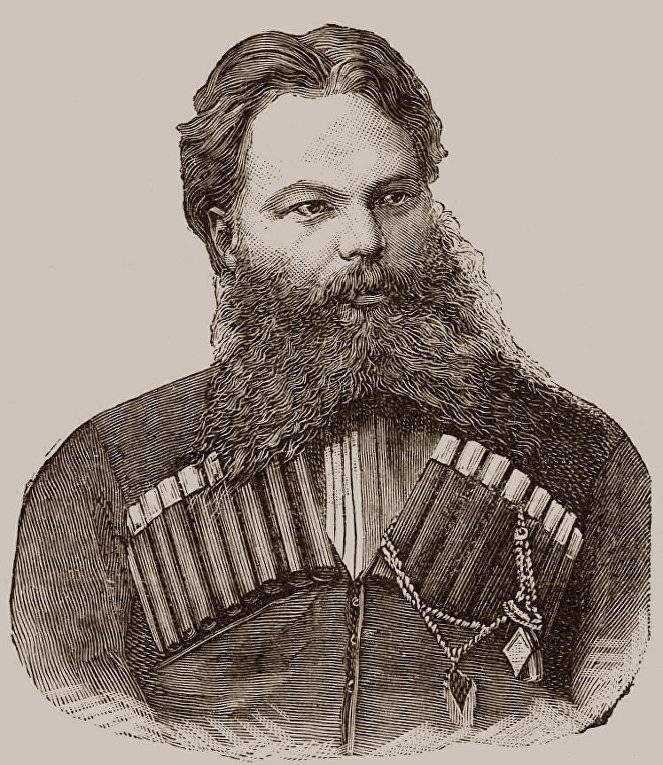
As soon as the French saw the signal of surrender, the shelling stopped. Parliamentarians were sent to the fortress for negotiations. Interestingly, Paisius left the colonists to meet the winners. Nikolai Ivanovich, fearing that the French would shoot him, hid in ruins. Archimandrite, of course, agreed to all conditions. And soon the colonists were transported to Obock. When Alexander III found out about the incident, he said: “The imperial government believes that there is no reason to impose responsibility on the French authorities in Obock for the bloodshed in Sagallo and that responsibility for this should fall entirely on Nikolai Ashinov, who decided to disturb the peace within the territory controlled by a power in friendly relations with Russia ... ”
Ashinova, Paisiya, and their entourage were imprisoned. But then all the former colonists were transported to Suez. The Russian ship nevertheless arrived here. And in March, the "free Cossacks" returned to their homeland. There was no harassment by the authorities. All just let them go home. Nikolai Ivanovich got off with a slight fright. After a quick investigation, he was sent into exile in Tsaritsyn. A year later, he was allowed to move to the estate of his wife, who was in the Chernigov province. As for Paisiy, he was assigned to one of the monasteries in Georgia.
Nikolai Ivanovich did not want to accept his fate. He again began to dream of an expedition to Abyssinia. Only this time, the Ashins tried to offer their services to foreign countries. But this idea failed.
According to the memoirs of contemporaries, Nikolai Ivanovich dreamed of Africa. He told the neighbors that he would definitely return there, but did not work out. Ashinov died in 1902 year.
There is a version that Nikolai Ivanovich acted in Africa not at his own discretion, but carried out an order that came down directly from St. Petersburg. Like, the sovereign really wanted to see the flag of the Russian Empire on African soil. Perhaps the calculation was on friendly relations with France or on occasional luck. And when the situation escalated, Ashinov became the sole scapegoat. Alexander III had to sacrifice them demonstratively in order to normalize relations with the French. Indeed, after returning to their homeland, the Ashinov escaped with only a brief reference.
But still, most researchers believe that Nikolai Ivanovich’s voyage is purely independent action. The man decided to try his luck and fate by getting involved in the political games of the two world powers.
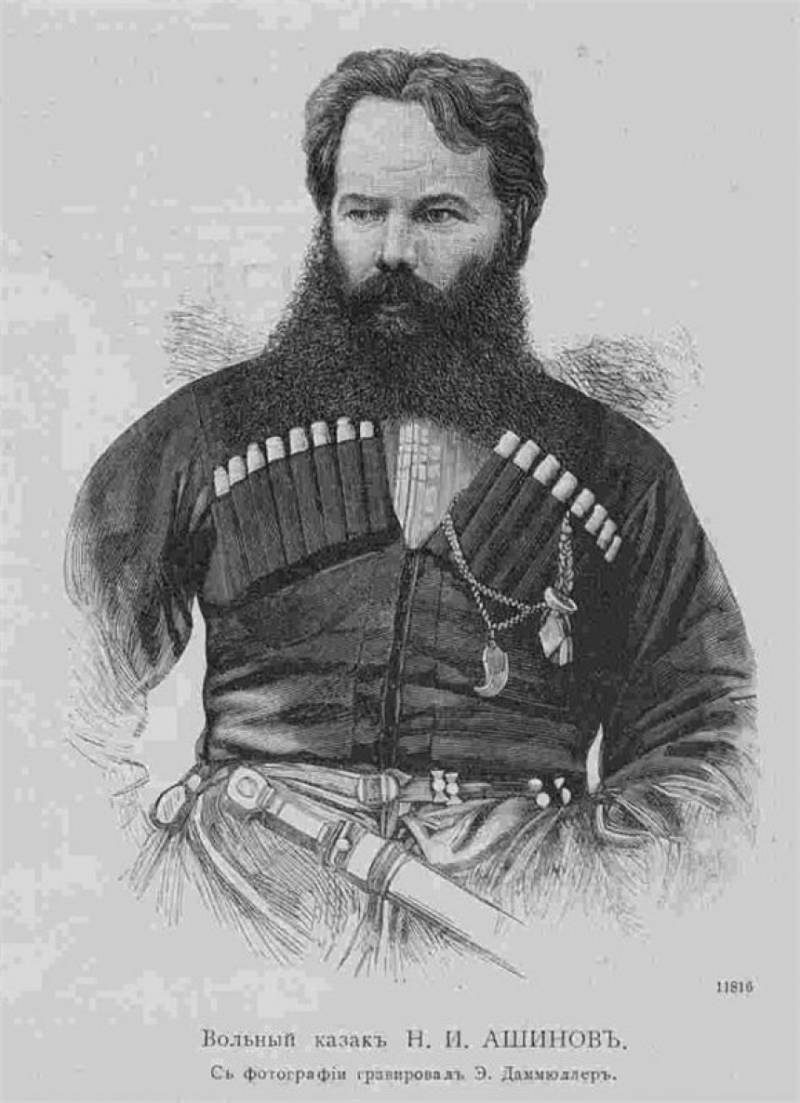
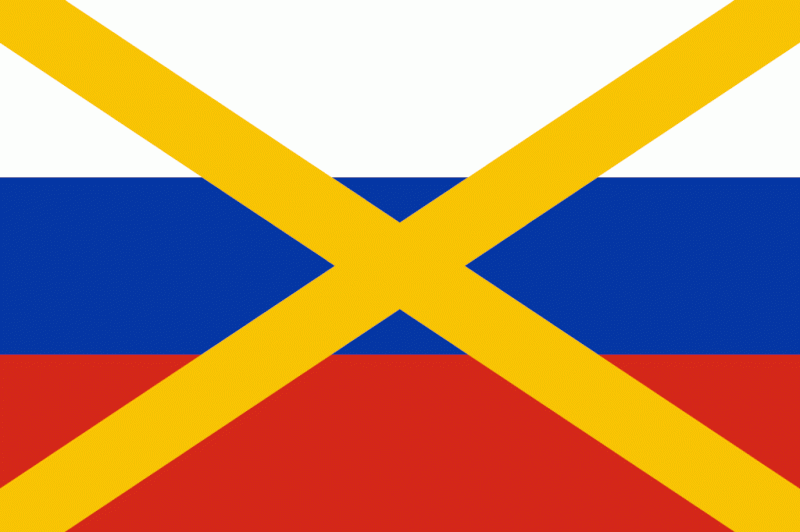
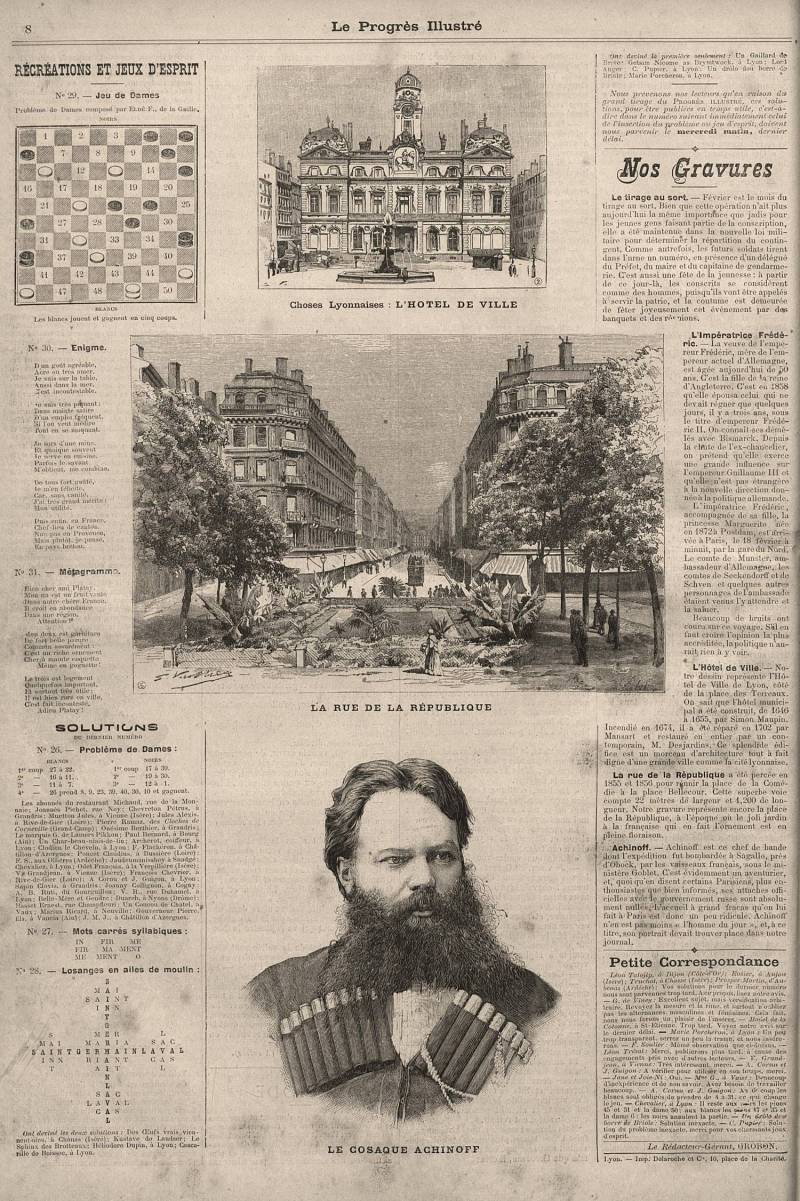
Information